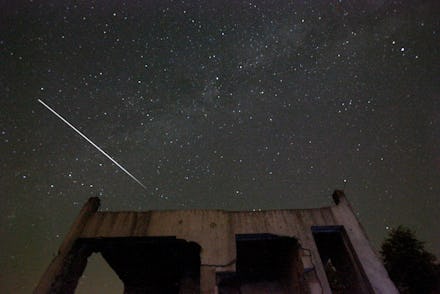This Campaign Could Help Us Figure Out What That "Alien Megastructure" Really Is

A big alien mystery might soon be solved — with help from a crowdfunding campaign.
In October 2015, star KIC 8462852, also called "Tabby's star," made headlines when scientists suggested its strange dips in brightness might be caused by a giant, alien-built megastructure. Now, astronomer Tabetha Boyajian has started a Kickstarter campaign to fund a full year of continuous observation of the star to figure out what's causing its strange dimming behavior.
This star is pretty damn strange. Citizen scientists first noticed dips in the star's brightness after sifting through Kepler Space Telescope data. They couldn't figure out what was causing the dips, so they turned things over to Boyajian and a team of astronomers, who found several moments when the the star dimmed by up to 22%. (Boyajian's TED Talk explains the whole backstory, if you're curious.)
There are some pretty compelling natural explanations for what might be causing the dimming, but astronomers still can't rule out intelligent life. Some have even proposed that the structure is something called a Dyson sphere, a theoretical piece of alien technology designed to harness a star's energy.
Is crowdfunded science the answer? Now that the Kepler Space Telescope has moved on to focus on new star systems and continue its hunt for exoplanets, we need a new way to keep studying this weird star. That's why Boyajian wants to raise money through Kickstarter to use a system of privately owned telescopes called the Las Cumbres Observatory Global Telescope Network (LCOGT).
"This Kickstarter project will secure observing time on a global network of ground-based telescopes so we can catch the star when its brightness dips again," the team writes on their Kickstarter page.
They'll need to constantly monitor the star for a year because the dips in brightness don't seem to follow any set pattern. Government-run telescopes are overbooked with long application processes, and they don't have the "capabilities for long-term, continuous monitoring," according to the team.
Their goal is to raise $100,000 by June 17 and start using LCOGT to observe the star.